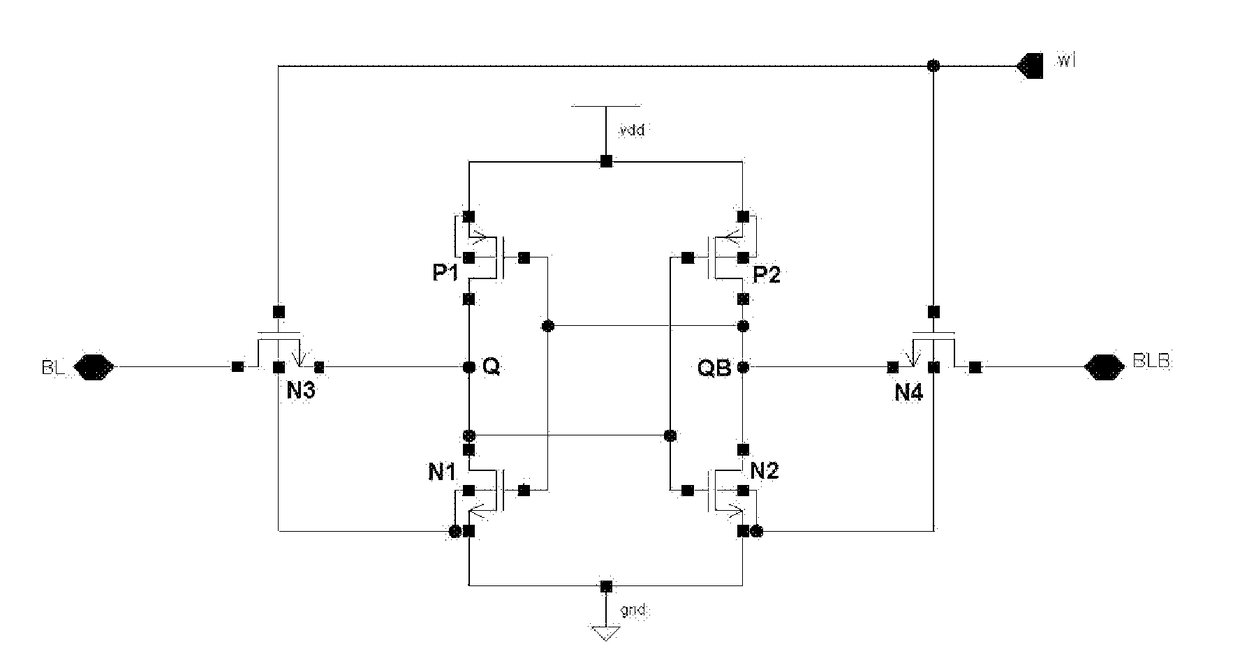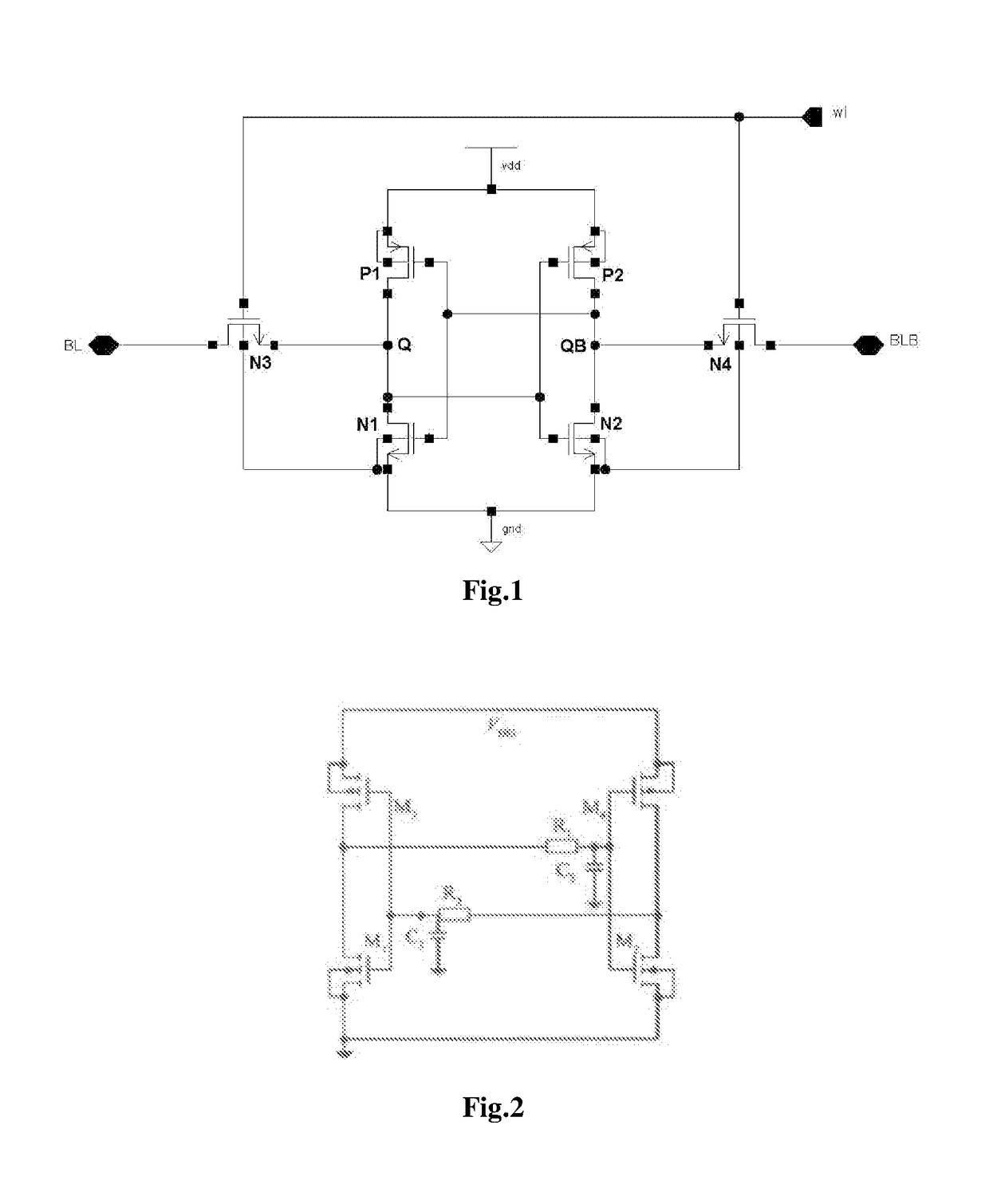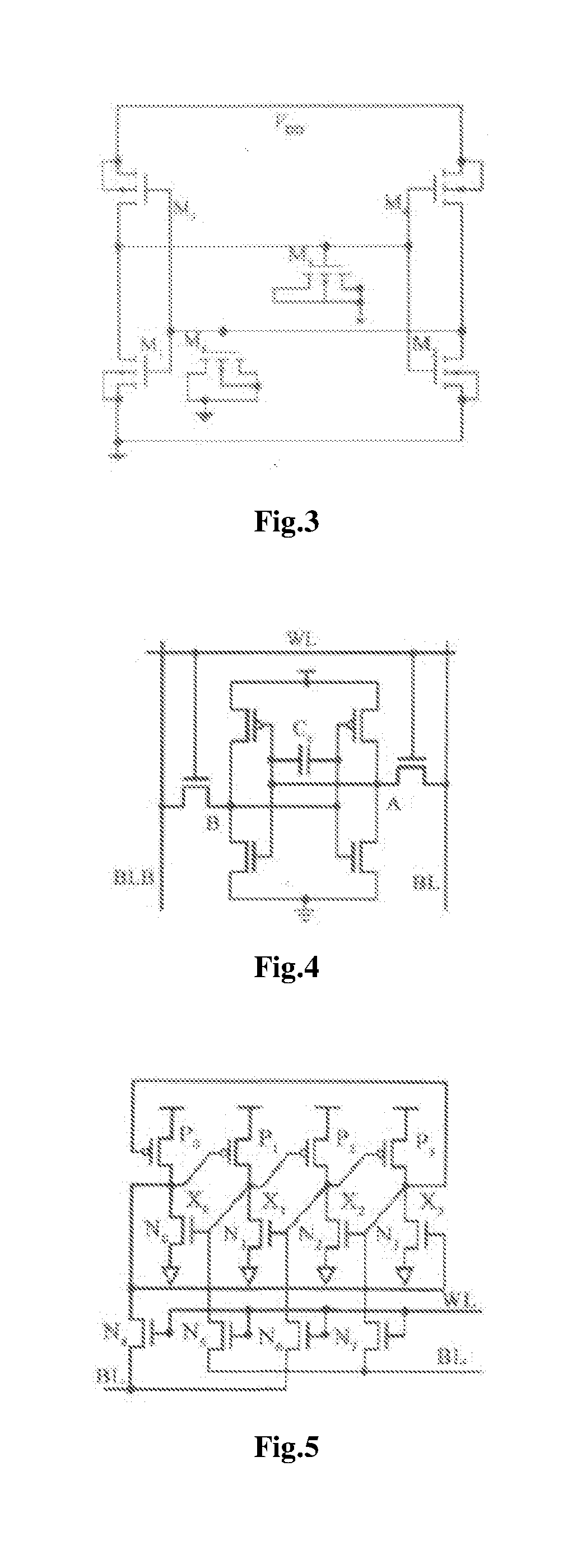Memory Cell of Static Random Access Memory Based on Resistance Hardening
a random access memory and memory cell technology, applied in static storage, information storage, digital storage, etc., can solve the problems of unbalanced carriers, fast loss of energy, and charge particles, and achieve good performance in overcoming single event upsets and circuit area overhead.
- Summary
- Abstract
- Description
- Claims
- Application Information
AI Technical Summary
Benefits of technology
Problems solved by technology
Method used
Image
Examples
embodiment 1
[0028]As shown in FIG. 6, a memory cell of a static random access memory based on resistance reinforcement according to the present invention comprises a latch circuit and a bit selection circuit, the latch circuit consists of two PMOS transistors P1 and P2, two NMOS transistors N1 and N2, a first resistance-capacitance network consisting of R1 and C1, and a second resistance-capacitance network consisting of R2 and C2; the bit selection circuit consists of NMOS transistors N5 and N6; the latch circuit forms four storage nodes X1, X1B, X2, X2B.
[0029]A drain of P1 is connected to X1, a source thereof is connected to a power supply, and a gate thereof is connected to X1B; two terminals of R1 are connected to X1 and X2, respectively, one terminal of C1 is connected to X1 and the other terminal is connected to the ground; a drain of N1 is connected to X2, a source thereof is connected to the ground, and a gate thereof is connected to X2B.
[0030]A drain of P2 is connected to X1B, a source...
embodiment 2
[0033]This embodiment differs from embodiment 1 by circuit designs of the first resistance-capacitance network and the second resistance-capacitance network, while the rest parts are the same as those in embodiment 1.
[0034]As shown in FIG. 7, the first resistance-capacitance network consists of a PMOS transistor P3 and an NMOS transistor N3 that are always on so as to act as resistance-capacitance isolation nodes, and the second resistance-capacitance network consists of a PMOS transistor P4 and an NMOS transistor N4 that are always on so as to act as resistance-capacitance isolation nodes; the always-on P3, P4, N3 and N4 redundantly preserve information of the storage nodes and form six storage nodes including X1, X1B, X2, X2B, X3 and X3B.
[0035]A source of P3 is connected to X1, a drain thereof is connected to X3, a gate thereof is connected to the ground, and its substrate is connected to a power supply, so that it is always on; a drain of N3 is connected to X3, a source thereof i...
embodiment 3
[0042]This embodiment differs from embodiment 2 by the storage nodes connected to the bit selection circuit, while the rest parts are the same as those in embodiment 2.
[0043]As shown in FIG. 8, a drain of N5 is connected to X1, a drain of N6 is connected to X1B; a source of N5 is connected to a bit line BL, a source of N6 is connected to a complementary bit line BLB; gates of N5 and N6 are connected to each other and are connected to a word line WL.
[0044]By means of the three embodiments of the present invention, without obviously increasing complexity and merely increasing a small amount of area, the memory cell of the static random access memory can be prevented from having single event upset in a radiation environment, meanwhile, they are compatible with the universal CMOS technology and are easily implementable.
PUM
 Login to View More
Login to View More Abstract
Description
Claims
Application Information
 Login to View More
Login to View More - R&D
- Intellectual Property
- Life Sciences
- Materials
- Tech Scout
- Unparalleled Data Quality
- Higher Quality Content
- 60% Fewer Hallucinations
Browse by: Latest US Patents, China's latest patents, Technical Efficacy Thesaurus, Application Domain, Technology Topic, Popular Technical Reports.
© 2025 PatSnap. All rights reserved.Legal|Privacy policy|Modern Slavery Act Transparency Statement|Sitemap|About US| Contact US: help@patsnap.com



